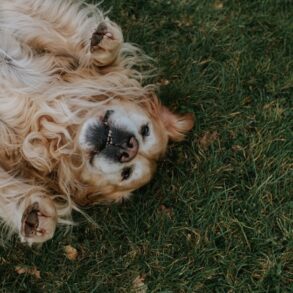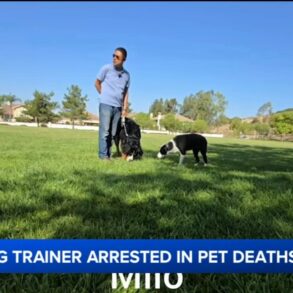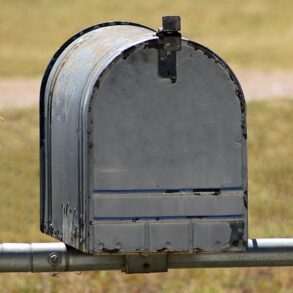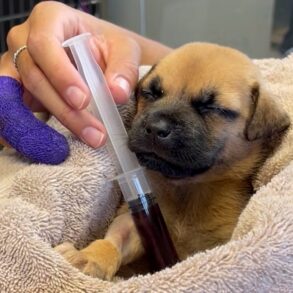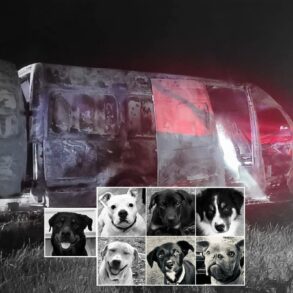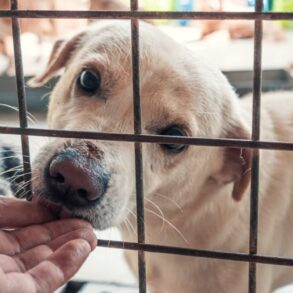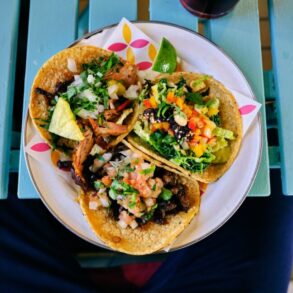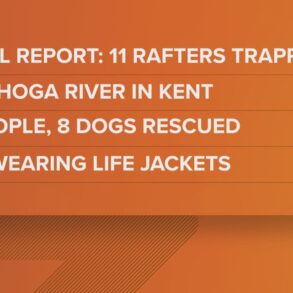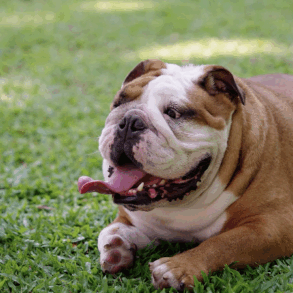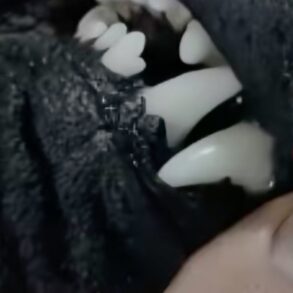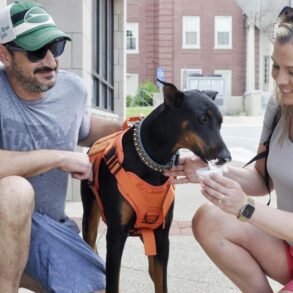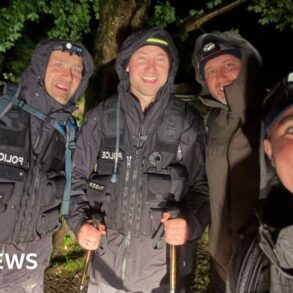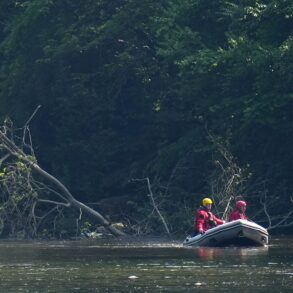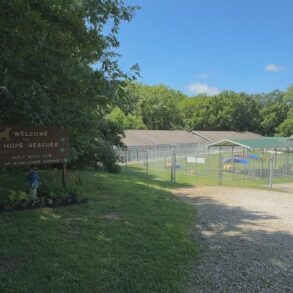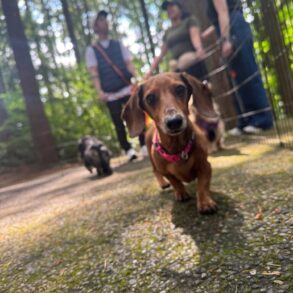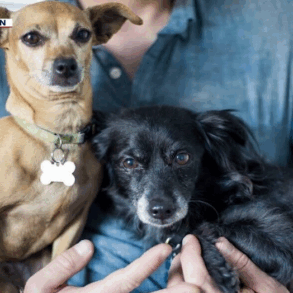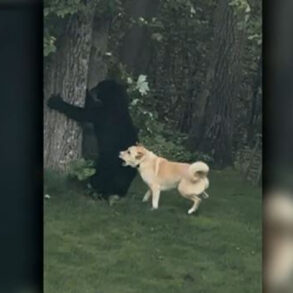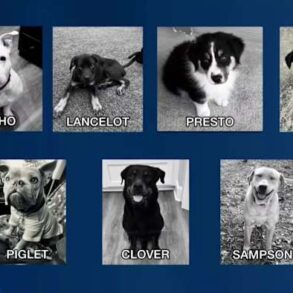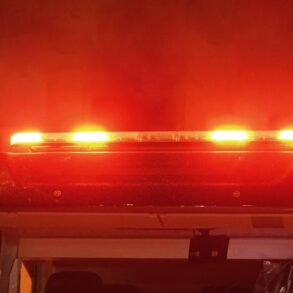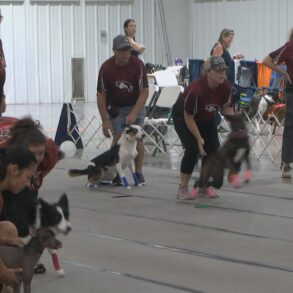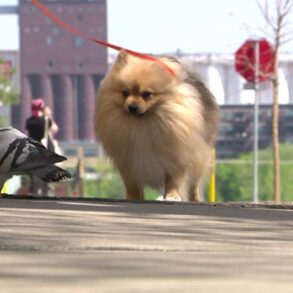In short:
Australia’s oldest dingo DNA, from fossils up to 2,746 years in age, has been compared with modern populations.
The study points to two distinct dingo groups east and west of the Great Dividing Range that continue today and predate European colonisation.
What’s next?
The findings could influence policy on whether dingoes can be shot as wild dogs, or whether the animals is protected as a native species.
Australia’s dingo populations are more closely related to ancient lineages that pre-date European colonisation than with modern dog breeds, according to a new DNA study.
The findings weigh into a raging debate over the origins of dingoes and how much they hybridise with domestic dogs.
It could influence whether farmers are permitted to shoot them as wild dogs, or whether the animal is protected as a native species.
Past research has suggested the majority of so-called ‘wild dogs’ are actually dingoes.
While this undermined the claim that there has been widespread hybridisation of the animal with domestic dogs since colonial times, questions remained.
Researchers have only had modern-day genetic profiles to compare current-day dingoes with.
But now for the first time they have got a glimpse into what they call the “pre-colonial genetic landscape” of dingoes, free from any mixing with modern dog breeds.
Sally Wasef, a palaeogeneticist from Queensland University of Technology, said modern DNA alone could not be used to judge the mixing of domestic dogs with dingoes.
That’s why she co-lead a new international study, published today in the Proceedings of the National Academy of Sciences, which compared modern dingo populations from 10 sites around Australia with much older DNA.
“Our ancient samples are the first in Australia that help to really say if modern dingoes have been interbreeding with domestic dogs or not,” Dr Wasef said.
Researchers used 16 ancient dingo DNA samples, ranging from 400 to 2,746-years-old, from sites in Western Australia, South Australia and New South Wales.
The results suggest the two morphologically different populations of dingoes, known as the north-west and south-east groups, are not the result of post-colonial hybridisation with more recently arrived dog breeds.
University of Adelaide computational biologist and co-lead author Yassine Souilmi said the ancient DNA showed the 13 modern dingoes sampled had far less European dog in them than had been speculated.
“In other words, most of the modern living dingoes that we have looked at today preserve their ancestral heritage,” he said.
University of New South Wales canid and wildlife genomics researcher Kylie Cairns, who was not involved with the study, said the genetic analysis corroborated earlier hypotheses that the population structure of modern dingoes was established in ancient times.
“The new study through the use of ancient DNA demonstrates the population structure existed 2,700 years ago,” Dr Cairns said.
Dr Cairns said the research also provided baseline data about the identity of ancient dingoes that may be useful for future work investigating dingo-dog hybridisation.
“This new study supports evidence that dingoes and domestic dogs rarely interbreed and adds to the growing body of evidence that dingoes are distinct from modern domestic dogs.”
Origins of east vs west dingoes
The new DNA study has not been able to shine any more light on when exactly the dingo’s ancestor first arrived in Australia, which has been suggested to be anywhere from 3,500 to more than 8,000 years ago.
What we do know is past studies have shown eastern dingoes have smaller bodies and teeth than their western counterparts that occupy more desert-like regions.
One theory was the differences in dingoes was because of hybridisation south of the dingo fence that runs from Dalby in Queensland to the Nullabor Plains of South Australia.
But Dr Souilmi said the new research showed the two populations were already established as far back as the current fossil record.
This means the split still seen today has been around for 2,500 years and has nothing to do with infrastructure like the fence.
He said what helped confirm the result was how modern western dingo DNA was more similar to ancient western DNA, than either was with the modern or ancient eastern lineage and vice versa.
“The signal is preserved across time and the east-west separation or differentiation goes as far back as we can look,” Dr Souilmi said.
Dr Soulimi said it was more likely ancestors of dingoes arrived at different coastal parts of Australia but were kept apart for biogeographical reasons.
“Because of … the Murray Darling Basin and the Great Dividing Range they haven’t really moved much across that barrier,” he said.
There is still uncertainty around how exactly the ancestors of dingoes and their cousin the New Guinea singing dog got to Australia and southern Asia.
But the eastern dingoes appear to be more closely related than the western group to singing dogs, which share a common ancestor with dingoes.
The new study suggests there was an initial split between dingoes and New Guinea singing dogs followed by some interbreeding involving the eastern group between 2,285 and 2,627 years ago.
Another possibility is that New Guinea singing dogs themselves may have ancestry coming from ancient dingoes, or it could be eastern dingoes derive from a population related to present-day New Guinea singing dogs.
Dr Wasef said there were a number of possibilities for how dingoes or their ancestors came to Australia.
“One of the explanations … [is] that there was two waves of arrival of the dingo to Australia, one that arrived to the west, and one other population to arrive to New Guinea and east coast,” she said.
Dingo or wild dog?
Dr Wasef and Dr Souilmi hope the new DNA baseline for what makes up a dingo will aid further localised research and conservation decisions for modern populations.
But to do this there needed to be further refinement of genetic tests of modern dingoes.
This means collecting more samples of ancient DNA but also known hybridised populations for comparison.
Dr Wasef said she would love to see more samples from the Northern Territory and Far North Queensland which could have been potential entry points for the original arrival of dingoes.
Dr Souilmi also hoped the new study would help inform conservation conversations around the dingo as an animal with a unique role in ecosystems.
“It really needs to be conserved and greater care and effort needs to be spent to preserve what is effectively the last apex terrestrial predator that we have in Australia,” he said.
Loading YouTube content
Get all the latest science stories from across the ABC.
This post was originally published on this site be sure to check out more of their content.





